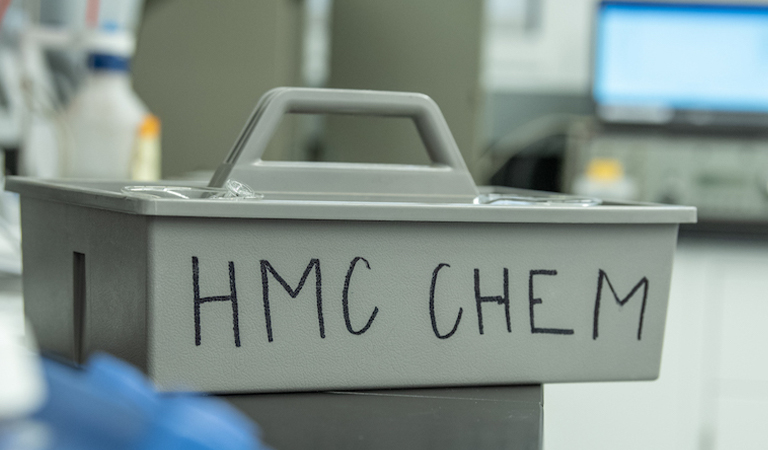Chemistry Safety Resources

The laboratory safety program at Harvey Mudd College includes comprehensive training for employees, students, and volunteers who work with chemicals. Summer research groups may select a Student Lab Safety Officer (SLSO) who receives more intensive safety training and acts as liaison between the Chemical Hygiene Officer and research labs. A highlight of the SLSO program is an annual “Safety Day” where researchers gain hands-on experience in the use of safety equipment such as spill kits and safety showers.
The following chemical safety documents are available in Adobe PDF format to members of the HMC Community.
Chemical Hygiene Plan (CHP) and Respiratory Protection Program
The Chemical Hygiene Plan (Google Doc) is required where hazardous chemicals are used in the workplace, pursuant to the California Code of Regulations (CCR) Title 8, Section 5191 and enforced by the California Occupational Safety and Health Administration (Cal-OSHA). The CHP contains provisions for protecting employees from health hazards associated with chemicals.
The Claremont Colleges Services maintains the Respiratory Protection Program (PDF), whose elements are implemented by Harvey Mudd College. Contact the Chemical Hygiene Officer or TCCS Environmental Health and Safety for more information.
Safe Laboratory Practices
The larger, more comprehensive document Safe Laboratory Practices in Chemistry (PDF) is also available, which lists detailed information for the safe use, storage, and disposal of common chemical reagents.
Identifying and Evaluating Hazards in Research Laboratories
The American Chemical Society publication Identifying and Evaluating Hazards in Research Laboratories (PDF) is a tool to guide researchers in analyzing the hazards in their laboratories. It includes step-by-step suggestions for performing job hazard assessments and the development of standard operating procedures.
Chemical Inventory System
The Chemical Inventory for the college is supported on Chimera
Access to inventory information requires registering for an account. Safety Data Sheets are also available through Chimera but an account is not required to access the them.
This quick guide may help in navigating the search and report functions of the Chimera program.
Laboratory Hazardous Waste
Hazardous waste disposal is regulated by federal and state law. While the laws are complex, there is some basic information (JPG) that may assist in the proper handling of your laboratory hazardous waste. Hazardous waste generation and disposal are covered in HMC’s Laboratory Safety Training. This offers an “at a glance” reminder of proper hazardous waste identification and accumulation. It is not a substitute for Hazardous Waste or Laboratory Safety Training.
Nanoparticles
Nanoparticles are defined as a material or particle with any external dimension having a diameter of between 1 and 100 nanometers. They may be engineered or naturally occurring. Because effects of nanoparticles are still being reviewed, scientists working with nanoparticles must assume that the particles are toxic on a cellular level. More information on nanoparticle safety may be found in the Nanotoolkit (PDF) published by the California Nanosafety Consortium of Higher Education.